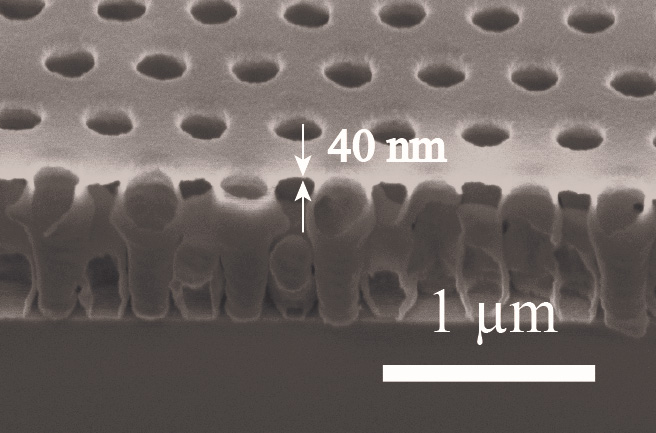UT, North Carolina State University researchers discover unique material characteristic in nanostructure
September 23, 2022
UT researchers, in collaboration with co-authors at North Carolina State University, proved the existence of anelasticity in nanostructures in a study published Sept. 12.
Similar to elasticity, anelasticity refers to how an object returns to its original form after being manipulated in some way. What distinguishes the two is that anelasticity is also reversible and will return to its original form, but it will take a longer time, said Yong Zhu, a mechanical and aerospace engineering professor at North Carolina State University. Chih-Hao Chang, an associate mechanical engineering professor at UT, discovered it for the first time in a material called nanolattice.
“Anelasticity is not new,” Zhu said. “People have found anelasticity in different materials due to different mechanisms. But we believe it’s the first time we found this anelasticity in these three-dimensional, thin-shell nanolattices.”
For example, anelasticity was seen previously in single nanowires, which are approximately 1,000 times thinner than a strand of hair, according to the Global Home of Chemical Engineers.
Chang said in an email that “nanolattices are ordered, periodic lattice structures with nanoscale features.” Examples of larger, latticed structures include bridges and towers, like the Eiffel Tower.
The research examined the effects of applying stress to nanolattices using a method called nanoindentation, which measures the hardness and elasticity of materials, according to AzoNano. This is typically done with an indenter tip being forced into a specific spot in the material, nanolattice in this case, and increasing the pressure until the researchers achieve the desired indentation depth.
Zhu and Chang found that the defects caused by the indentation gradually returned to their original form, proving the material’s anelastic capabilities.
“Fundamentally, we want to see if this mechanism works for other geometries,” Zhu said. “We discovered a new pathway. In terms of applications, anelasticity can lead to energy damping for energy dissipation.”
Energy damping occurs when vibration-like motions stop because of energy dissipation, or when energy is lost, according to Britannica. For example, unless you keep bouncing a ball, it will eventually slow down to a stop, because the energy dampens the dissipation, or loss, of energy.
Chang said although they are still in the early stages of how this new characteristic could be applied, they have some ideas, such as being used in microchips.
“What we were interested in was the basic fundamental aspects and designing these three-dimensional lattice structures,” Chang said. “In the past, we’ve seen a lot of interesting optical, mechanical properties, and this (study) just adds a new dimension to it. It really fits with this framework where we try to design materials from scratch. All these properties are things you don’t get in a traditional bulk material.”



